





 |
 |
 |
 |
 |
 |
| Andrys Basten | profile | all galleries >> TURKEY Photos - Anatolia, 2004, with Canon Elph >> Aphrodisias site and museum - photos | tree view | thumbnails | slideshow |
|
On the way to Pamukkale, we drove to the less-visited ruin site of Aphrodisias This time we hit the museum first, as Aphrodisias was most known for its academy of sculpture, with copies later found in Italy and Greece. Statues were carved from the white, gray-blue Carian marble nearby. It was also a center for philosophy (Xenocrates) and medicine.
While they've found settlements going back to ~2800 BC, its heydey was under the Romans
In the 6th C., the name was changed to Stavropolis by the Christians to erase memories of free-spirit Aphrodite, but the locals preferred the name Caria, later likely modified to the name Geyre in Turkish. |
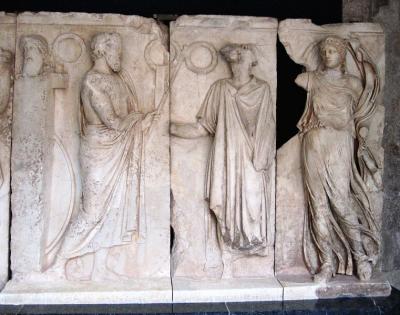 A relief at the Aphrodisias museum |
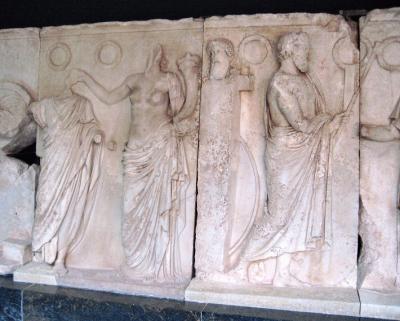 To the left a bit |
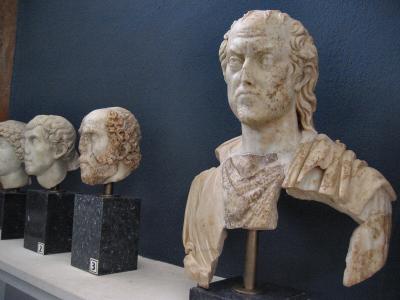 I don't know who is represented in this one. Let me know if you do. |
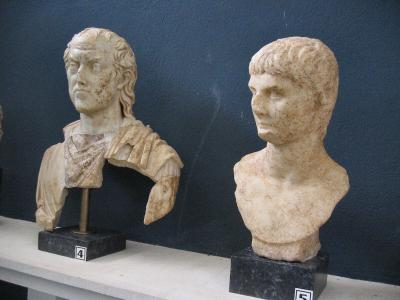 Also, I don't know "who" is on his left :-) |
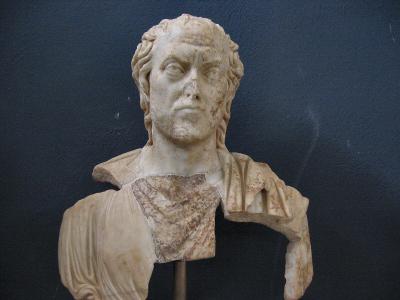 Didn't learn what caused the spotting. |
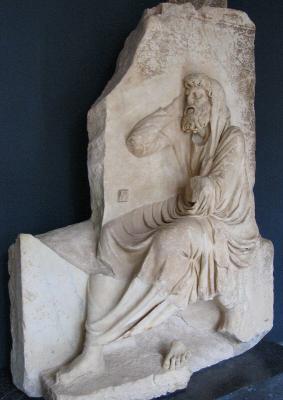 "Eternity" feeling some foreboding about eternity Description there: "AION - (Eternity) raises his right hand to his head in a gesture of
|
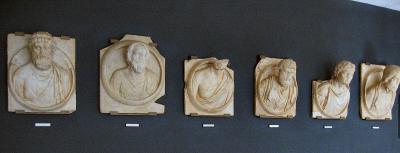 Philosopher Row |
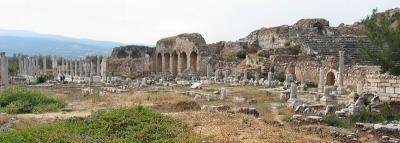 Eastern slope of the larger of two prehistoric settlement mounds ~2800 BC The ruins that survived are of 2nd-3rd century, however. |
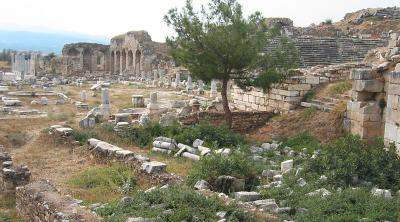 The Romans built over the older sites. Beautiful landscape. |
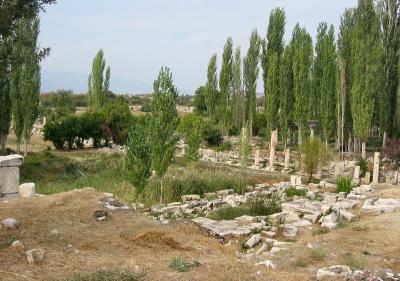 Possibly Hadrian Baths? |
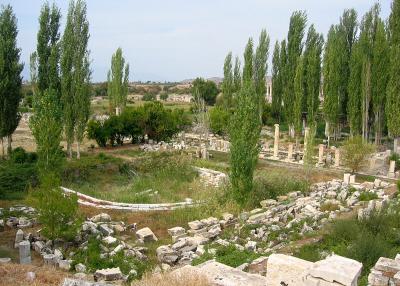 Gorgeous trees |
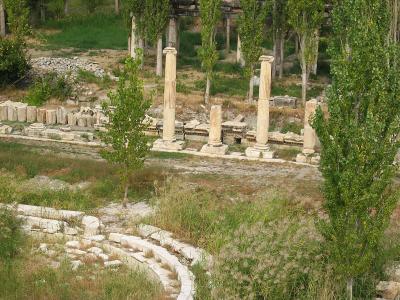 It felt like Italy here. |
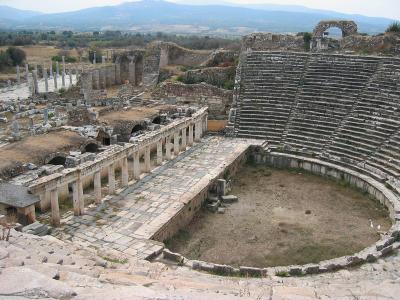 Theater, with colorful stone stage Seating was for over 10,000. Built by the Greeks in the 1st C. and enlarged by Marcus
|
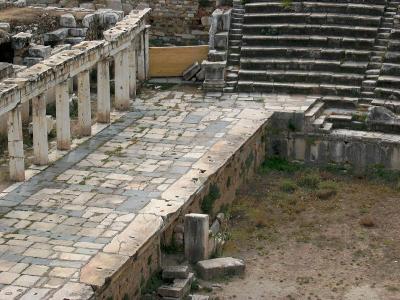 Zoomed the little Elph S400 for stage detail More info (and then some) on the theater at the Whitman website. |
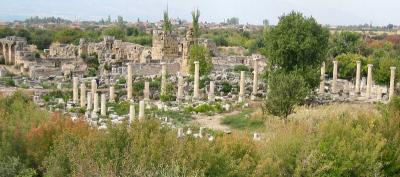 Columns R Us (seen from a pathway above) |
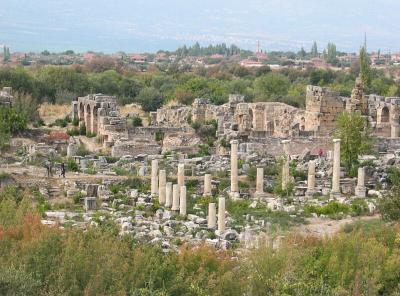 To be identified later ... |
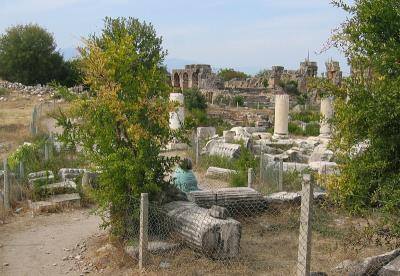 Now at lower level of the site |
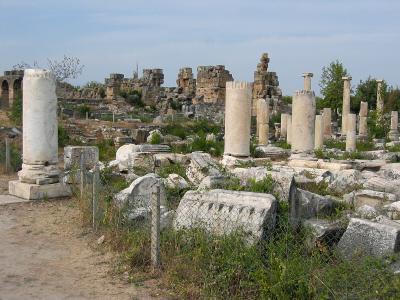 There's always a sarcophagus nearby in Ancient Anatolia. Sturdy white column at left, and what seems like mix and match otherwise. |
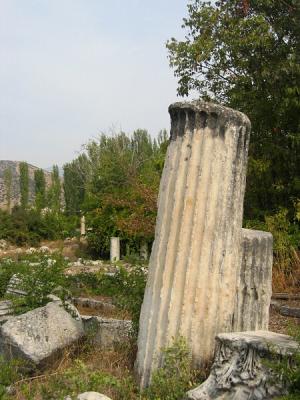 |
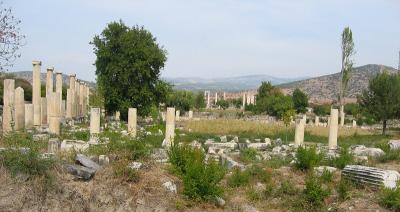 Temple of Aphrodite in the distance. |
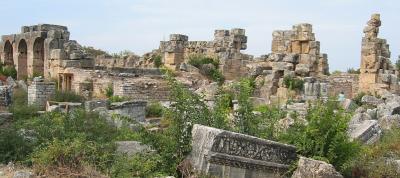 Another sarcophagus in forefront. Am walking towards objects in back, right. |
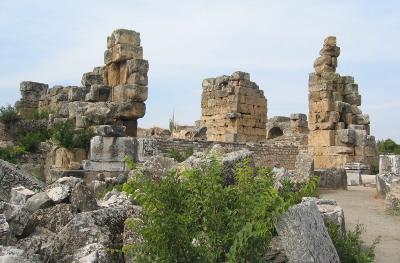 |
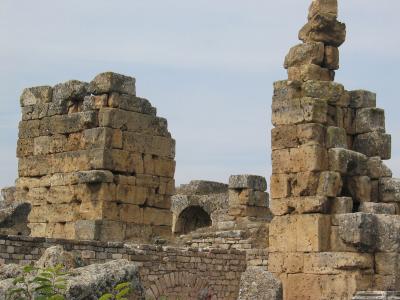 This reminded me of Machu Picchu's Lower Urban Center. |
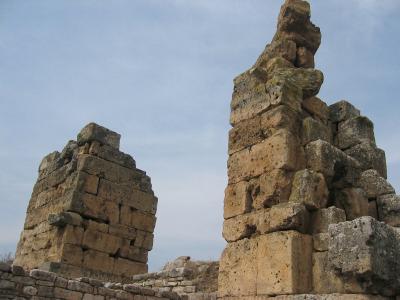 |
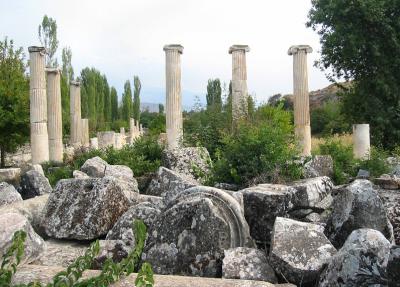 After the earthquake (especially 7th C.) |
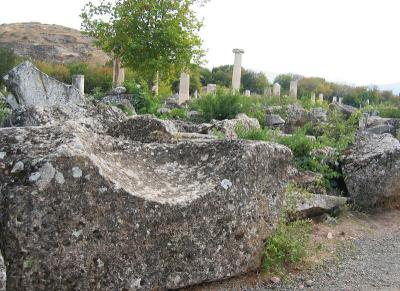 This was a sundial. |
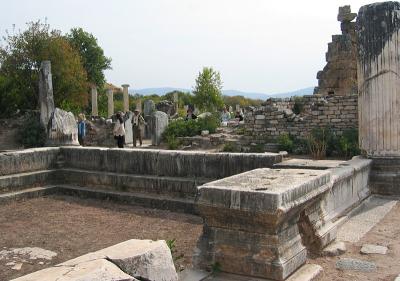 Baths of Hadrian section |
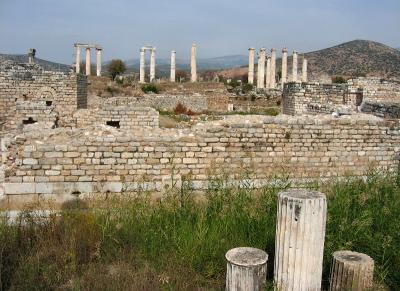 What's left of The Temple of Aphrodite across the way Just whimsy, but this looked to me like a mother column showing her 2 young'uns the master
|
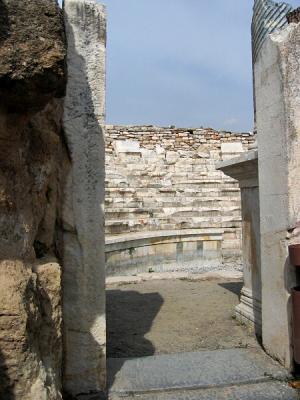 Coming upon the marble Odeon (small greek theater) Built 2nd-3rd C., it once had a roof, with light coming from tall arched windows in the curved
|
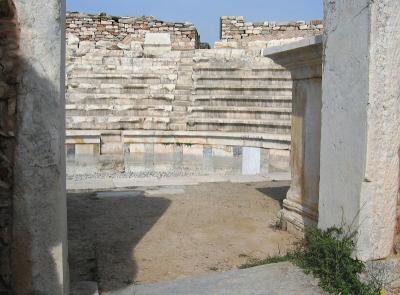 At an entrance, on the right side While the lower nine rows of marble seats survived intact, the 12 rows of the upper seating
|
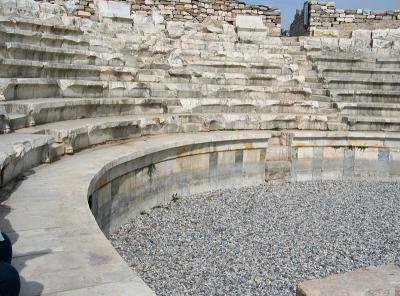 The Odeon of the Bouleuterion (Council House) Seating for ~1750. The marble on lower portion, with large seats on top row, stayed intact
|
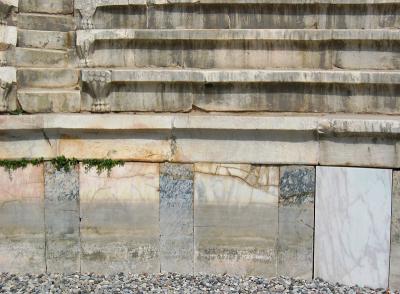 Stone detail that I found quite beautiful. In the 5th C., the space was used as a concert hall and lecture room and for competitive displays.
|
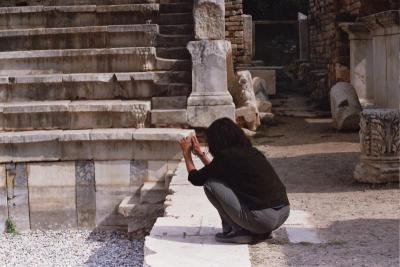 The stones were like modern art to me. Note the lion's feet at the ends of the rows. |
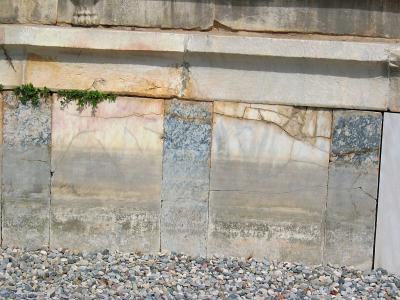 Closer look at stone detail |
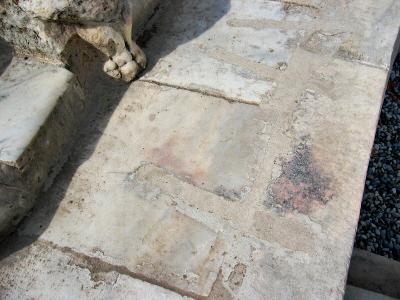 Marble seats, with lion's paws marking end of a row Shot this from radial stairway at end of row in that section. |
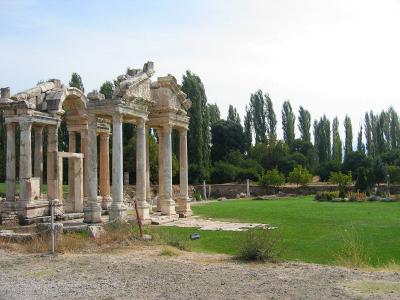 The Tretrapylon - gateway to the site. 2nd C. AD Built during Hadrian's reign, it had 4 rows of 4 columns. Am walking from site to the gate out. |
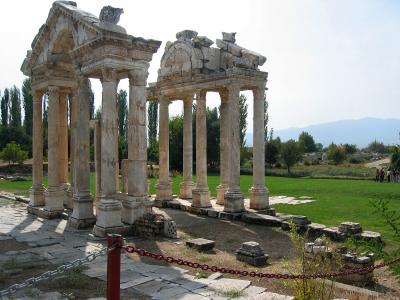 Tetrapylon - from the front. |
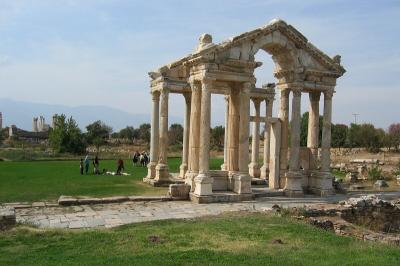 Tetrapylon - from left, as we exit the site You can see the Temple of Aphrodite in the distance. This probably marked a Sacred path to it. |
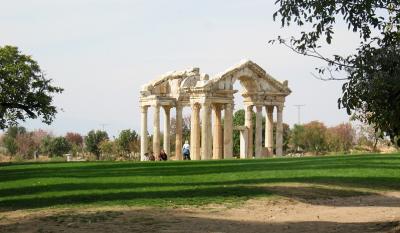 Tetrapylon - a last look at Aphrodisias while exiting |
| comment | share |
| Sukru Tul | 13-Jan-2007 05:31 | |
| Leo Thomas | 19-Sep-2006 12:43 | |